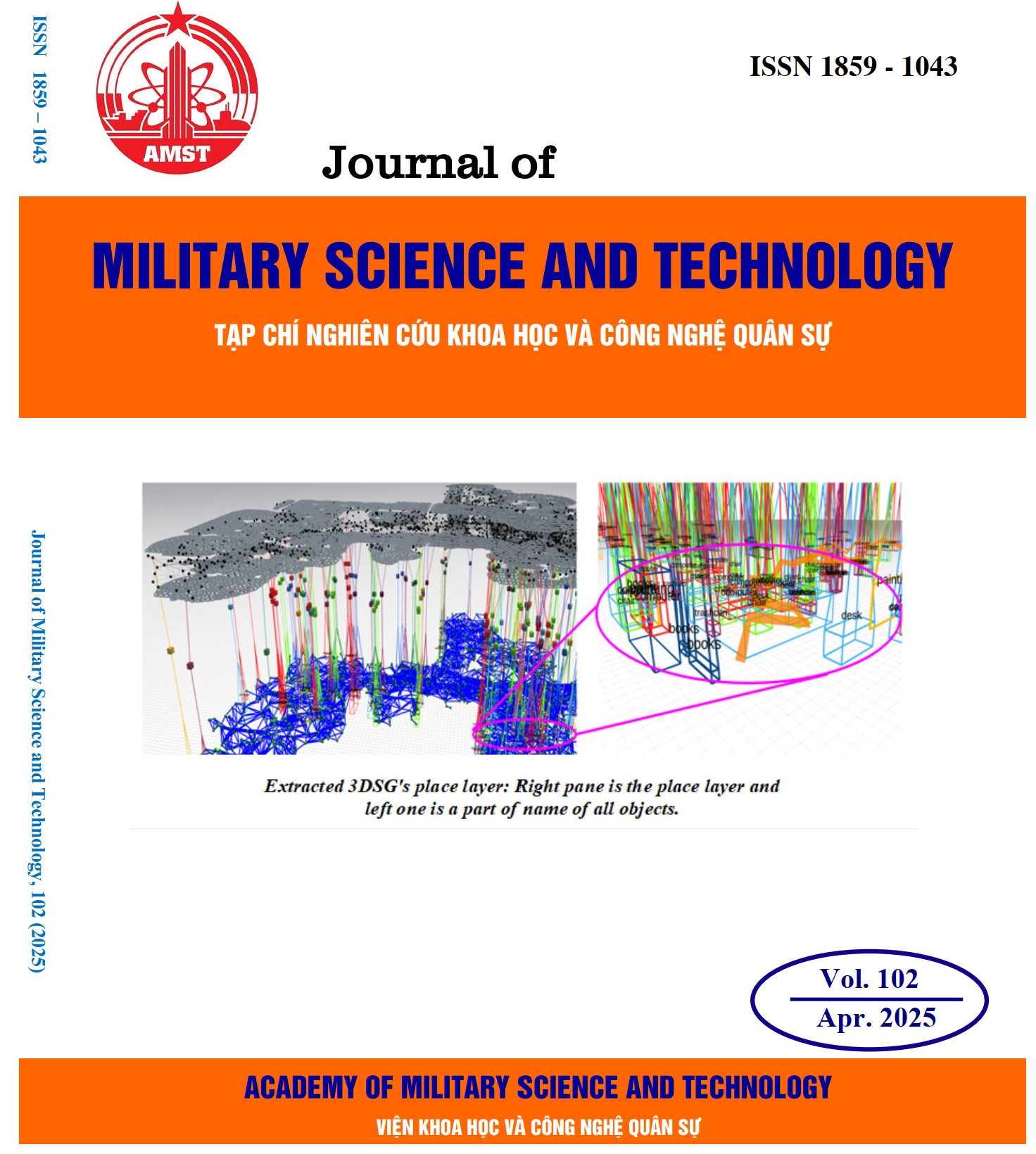Synthesis of adaptive control algorithms based on output feedback with an implicit reference model for application on aerial vehicles
378 viewsDOI:
https://doi.org/10.54939/1859-1043.j.mst.102.2025.23-30Keywords:
Aerial vehicle; Adaptive control; Implicit reference model; Longitudinal motion; Output feedback; UAV; Parameter uncertainty.Abstract
This paper addresses adaptive control for an aircraft's longitudinal motion under parameter uncertainty. A mathematical model is developed, and simulations validate the proposed approach. A linear modal controller is designed for nominal parameters, while an adaptive controller with an implicit reference model ensures stability under uncertainties. MATLAB/Simulink simulations on the UAV-70V model show that the linear modal controller performs well with known parameters but becomes unstable with variations. In contrast, the adaptive controller maintains robust stability, rapid response, and precise trajectory tracking. These findings confirm its effectiveness in uncertain environments.
References
[1]. Narendra K. S., Annaswamy A. M. “Stable Adaptive Systems”. Dover. 215p, (2005).
[2]. Fradkov, A.L., Polyak, B. “Adaptive and robust control in the ussr”. IFAC-PapersOnLine 53, 1373-1378 (2020). DOI: https://doi.org/10.1016/j.ifacol.2020.12.1882
[3]. Zhang C., Pan X., Zheng Y. “Direct adaptive fuzzy control for trajectory tracking of a quadrotor UAV”. International Journal of Fuzzy Systems, 19(1), 41–52 (2017).
[4]. Pan, T., Li, Z., & Shi, D. “Direct adaptive control of a quadrotor UAV based on dynamic inversion method”. 36th Chinese Control Conference (CCC), pp. 7015–7020, (2017).
[5]. De Luca, M., & Tedesco, F. “A self-tuning control approach for UAV formation flight with obstacle avoidance”. Journal of Intelligent & Robotic Systems, 90 (1), 149-161 (2018).
[6]. Khosravi, M. A., Jalali, S., & Yazdanpanah, M. J. “A self-tuning adaptive control system for quadrotor UAVs based on reinforcement learning”. IEEE 58th Conference on Decision and Control (CDC), pp. 1895–1900, (2019).
[7]. G. Chen, J. Zhou, L. Wang, Y. Wang, Y. Yin and Z. Ding, “Modeling and Adaptive Controlling of Quadrotor UAV with Flexible Gripper”, 2022 IEEE 10th Joint International Information Technology and Artificial Intelligence Conference (ITAIC), Chongqing, China, pp. 1984-1991 (2022). DOI: https://doi.org/10.1109/ITAIC54216.2022.9836966
[8]. Leitão, Daniel, Rita Cunha, and João M. Lemos. “Adaptive Control of Quadrotors in Uncertain Environments”, Eng 5.2: 544-561 (2024). DOI: https://doi.org/10.3390/eng5020030
[9]. Nguyen Viet Phuong, Nguyen Duy Khanh, and Ho Cong Quoc. “Điều khiển thích nghi quadrotor với các tham số bất định”. Journal of Military Science and Technology 92: 30-37 (2023), (in Vietnamese). DOI: https://doi.org/10.54939/1859-1043.j.mst.92.2023.30-37
[10]. Андриевский Б.Р., Фрадков А.Л. “Метод пассификации в задачах адаптивного управления, оценивания и синхронизации”. - Автоматика и телемеханика, C. 129-142 (2026).
[11]. А. А. Лебедев, Л. С. Чернобровкин. “Динамика полета беспилотных летательных аппаратов” - M.: Машиностроение, 615с, (1973).
[12]. Đặng Công Vụ, Lê Thanh Phong, Nguyễn Đức Cương, “Ứng dụng thuật toán điều khiển bay tự động cho UAV cỡ nhỏ trong điều kiện có nhiễu động gió”, Tạp chí Khoa học và kỹ thuật, số 175, Học viện KTQS, (2016) (in Vietnamese).







